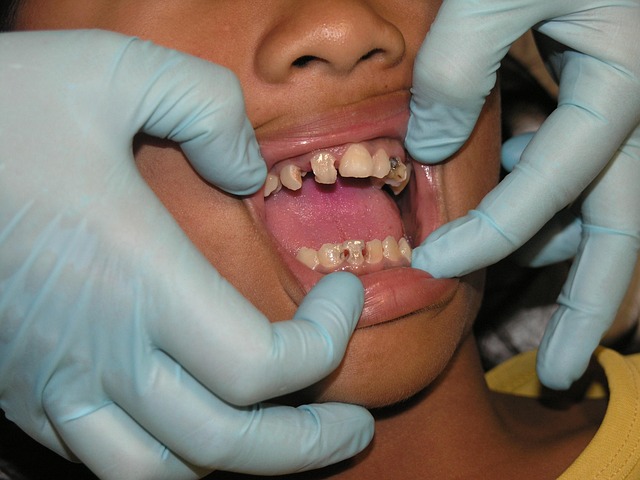Military PTSD is a severe mental health condition impacting veterans and active-duty service members due to traumatic experiences during operations. Key symptoms include flashbacks, nightmares, avoidance behaviors, negative mood shifts, and heightened arousal. Effective PTSD treatment involves counseling, cognitive processing therapy (CPT), eye movement desensitization and reprocessing (EMDR), cognitive behavioral therapy (CBT), group therapy, family involvement, and access to specialized resources. These approaches help veterans process traumatic memories, reduce symptoms, regain control over their lives, and successfully reintegrate into civilian life. EMDR stands out for its rapid and effective results in managing PTSD.
“Counseling plays a pivotal role in aiding military personnel cope with Post-Traumatic Stress Disorder (PTSD), offering essential tools for healing. This comprehensive guide explores effective strategies for treating military-related PTSD, from understanding its symptoms and causes to investigating advanced therapeutic techniques. We delve into evidence-based approaches like Cognitive Behavioral Therapy (CBT) and Eye Movement Desensitization and Reprocessing (EMDR), emphasizing the value of group therapy and family involvement. Additionally, we provide resources for access to support networks and long-term management strategies for PTSD treatment.”
Understanding Military PTSD: Symptoms and Causes

Military PTSD, or Post-Traumatic Stress Disorder, is a severe condition that can significantly impact veterans and active-duty service members after experiencing traumatic events. It’s crucial to recognize that this mental health issue stems from exposure to intense, life-threatening situations common in military operations. The symptoms of PTSD can manifest in various ways, often including flashbacks, nightmares, and intense distress when reminded of the trauma. Those affected may also experience avoidance of reminders of the event, negative changes in thoughts and mood, and heightened arousal or reactivity.
Several factors contribute to the development of military PTSD. Direct exposure to combat is a primary cause, where individuals witness or engage in life-threatening situations. However, even those who don’t participate in direct combat can be affected, especially when deployed in high-risk areas or witnessing the consequences of violence. Additionally, the unique stressors of military life, such as separation from loved ones, frequent relocations, and the pressure to perform under extreme conditions, can increase vulnerability to PTSD. Understanding these causes is a critical step in accessing effective PTSD treatment and supporting those who have served.
The Role of Counseling in PTSD Treatment

Counseling plays a pivotal role in the comprehensive approach to PTSD treatment. Through one-on-one sessions with qualified professionals, individuals who have experienced traumatic events while serving in the military can process and work through their flashbacks, nightmares, and intense emotions. Skilled counselors employ various evidence-based therapeutic techniques tailored to address the unique challenges faced by veterans, helping them develop coping mechanisms and regain a sense of control over their lives.
Effective counseling for PTSD treatment focuses on creating a safe and supportive environment where veterans feel empowered to confront and overcome their traumatic memories. By exploring these experiences in a structured setting, individuals can gain insights, challenge negative thought patterns, and learn healthy ways to manage stress and anxiety. This process facilitates healing and promotes resilience, enabling veterans to reintegrate into civilian life with improved mental well-being and enhanced quality of life.
Therapeutic Approaches for Military-Related Trauma

Counseling for military personnel suffering from post-traumatic stress disorder (PTSD) employs various therapeutic approaches tailored to address the unique challenges faced by veterans. One effective method is cognitive processing therapy (CPT), which helps individuals confront and process traumatic memories, reducing their emotional impact. CPT encourages patients to challenge negative beliefs arising from the trauma, fostering a more adaptive understanding of the event.
Eye movement desensitization and reprocessing (EMDR) is another powerful tool in PTSD treatment. This approach facilitates healing by guiding patients through a series of guided eye movements while recalling traumatic memories. EMDR allows individuals to process and integrate these memories, reducing symptoms like flashbacks, nightmares, and heightened anxiety. Such therapeutic interventions offer military members effective paths toward recovery and improved quality of life.
Cognitive Behavioral Therapy (CBT) for PTSD

Cognitive Behavioral Therapy (CBT) is a highly effective and widely recognized approach for treating Post-Traumatic Stress Disorder (PTSD). This evidence-based therapy focuses on helping individuals identify and modify negative thought patterns and behaviors that may have developed as a result of traumatic experiences. By challenging unhelpful cognitive distortions, CBT enables veterans to manage symptoms like flashbacks, nightmares, and severe anxiety.
The process involves teaching practical coping strategies to deal with distressing memories and emotions. Through structured sessions, therapists assist clients in reframing their perspectives on the trauma, reducing its emotional hold. CBT for PTSD encourages individuals to confront and process their experiences safely, helping them regain a sense of control and improve overall well-being. This form of therapy has shown remarkable results, offering long-lasting relief from PTSD symptoms.
Eye Movement Desensitization and Reprocessing (EMDR) Technique

Eye Movement Desensitization and Reprocessing (EMDR) is a well-regarded therapy for post-traumatic stress disorder (PTSD). This innovative approach aims to help individuals process traumatic memories, reducing their distressing impact. During EMDR sessions, clients focus on specific traumatic events while engaging in bilateral stimulation, typically through side-to-side eye movements, taps, or tones. This dual attention facilitates the brain’s natural healing process, allowing individuals to reprocess traumatic memories and gain new insights.
The technique is designed to help veterans and active-duty military personnel navigate and overcome the challenges posed by PTSD. By desensitizing them to distressing memories and associated triggers, EMDR can significantly improve their quality of life. This therapy has gained prominence in the field of PTSD treatment due to its ability to offer rapid and effective results, providing a glimmer of hope for those struggling with the invisible wounds of war.
Group Therapy Sessions for Veterans

Group therapy sessions have emerged as a powerful tool in the arsenal of PTSD treatment for veterans. These collaborative settings allow individuals to connect with peers facing similar challenges, fostering a sense of community and shared understanding. Through facilitated discussions, veterans can openly share their experiences, process trauma memories, and learn coping strategies from one another. The group dynamic encourages active participation, promotes self-reflection, and offers invaluable peer support, enhancing the overall effectiveness of PTSD treatment.
In these sessions, professionals guide participants in exploring traumatic events, managing symptoms, and developing resilience. By participating in group therapy, veterans can benefit from reduced feelings of isolation, improved social skills, and enhanced ability to navigate emotional challenges. This collaborative approach not only complements individual therapy but also empowers veterans with a sense of belonging and shared purpose in their journey towards healing.
Family and Partner Involvement in Healing

Family and partners play a pivotal role in the healing process for individuals dealing with Post-Traumatic Stress Disorder (PTSD). Their support can significantly enhance the effectiveness of PTSD treatment, offering a sense of safety and validation that is crucial for recovery. Involving loved ones allows for shared experiences and understanding, fostering an environment where the individual feels heard and supported, which is essential in managing symptoms like flashbacks, nightmares, and severe anxiety.
Incorporating family and partners into therapy sessions can provide a platform for open communication, promoting coping strategies that work best within the dynamic of their relationship. This collaborative approach not only reinforces positive techniques but also ensures consistency outside of formal treatment settings, contributing to sustained improvement in mental health outcomes.
Accessing PTSD Resources and Support Networks

Accessing resources and support networks is a crucial step for individuals dealing with PTSD, especially those from military backgrounds. Many organizations and community groups specialize in providing assistance tailored to veterans and active-duty service members. These networks offer various services like counseling, peer support groups, and educational workshops focused on PTSD treatment and management. Connecting with fellow veterans who have experienced similar struggles can foster a sense of belonging and understanding.
Online platforms and mobile apps also serve as valuable resources, offering remote access to therapy sessions and support communities. These digital tools break down geographical barriers, ensuring individuals in remote areas or those unable to attend in-person meetings can still access vital PTSD resources and build their support systems.
Long-term Management and Prevention Strategies

Many individuals who have experienced PTSD from military service find long-term management and prevention crucial for maintaining their mental health. Beyond initial trauma recovery, a multifaceted approach is often required. Engaging in regular therapy sessions with professionals specializing in PTSD treatment equips veterans with coping mechanisms and tools to navigate triggers and relapses effectively.
Additionally, building a robust support network comprising fellow veterans, family, or friends can provide a sense of belonging and understanding. Incorporating stress-reducing practices like mindfulness meditation, exercise, or social engagement into daily routines can also be preventative measures against exacerbation of symptoms. Continuous learning about PTSD and its impact empowers individuals to self-monitor and proactively seek support when needed, fostering sustained well-being.
